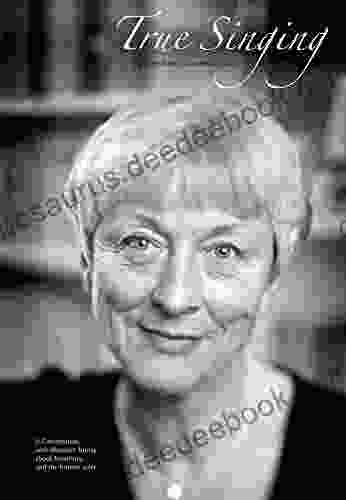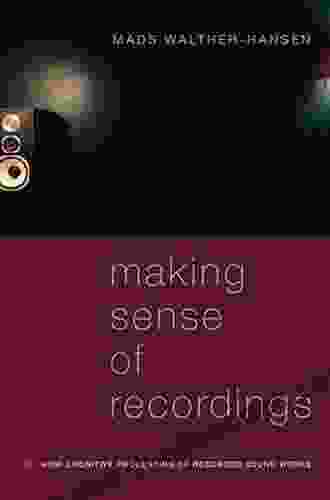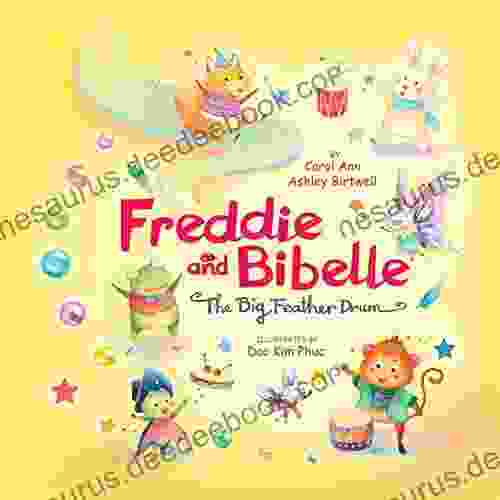How Cognitive Processing of Recorded Sound Works: Unraveling the Brain's Symphony to Music

Unveiling the Auditory Tapestry
The human brain is an intricate symphony of cognitive processes, and the processing of recorded sound stands as a testament to its remarkable abilities. When our ears receive sound waves, they initiate a cascade of events that ultimately give rise to a rich and multifaceted auditory experience.
4.5 out of 5
| Language | : | English |
| File size | : | 4856 KB |
| Text-to-Speech | : | Enabled |
| Enhanced typesetting | : | Enabled |
| Word Wise | : | Enabled |
| Print length | : | 154 pages |
| Lending | : | Enabled |
| Screen Reader | : | Supported |
Journey to the Auditory Cortex
At the heart of this cognitive journey lies the auditory cortex, a specialized brain region nestled within the temporal lobes. This remarkable area serves as the primary processing hub for sound, breaking down acoustic signals into their constituent elements of timbre, pitch, loudness, and temporal patterns.
Unraveling Timbre: The Fingerprints of Sound
Timbre, the unique sonic fingerprint of an instrument or voice, stems from the complex interplay of overtones and formants. The auditory cortex adeptly discerns these minute variations, allowing us to distinguish between a violin and a flute, or a soprano and a tenor.
Unveiling Pitch: The Melody of Sound
Pitch, the perceived highness or lowness of a sound, is determined by the frequency of sound waves. The auditory cortex employs tonotopic maps, specialized regions that respond to specific frequencies, enabling us to perceive the intricate melodies that form the backbone of music.
Decoding Loudness: From Whisper to Thunder
Loudness, the perceived intensity of sound, is a crucial factor in our auditory awareness. The auditory cortex utilizes vast neuronal networks to gauge the amplitude of sound waves, allowing us to appreciate the subtleties of a whisper or the thunderous power of a crashing cymbal.
Unraveling Temporal Patterns: The Rhythm and Flow
Temporal processing, the brain's ability to perceive the timing and duration of sound, is essential for our appreciation of music. The auditory cortex orchestrates a symphony of neural activity to detect rhythm, meter, and syncopation, enabling us to dance to the beat and tap our toes to the infectious groove.
From Acoustic Signal to Auditory Experience
The cognitive processing of recorded sound is a remarkable feat, transforming mere acoustic signals into a rich tapestry of perception and emotion. As the brain decodes the complexities of sound, it intertwines with our memories, associations, and cultural experiences, giving rise to a uniquely human experience of music.
Memory and Association: The Echoes of the Past
Our auditory experiences are profoundly intertwined with our memories. Familiar melodies can evoke vivid recollections, while new sounds can forge fresh associations. The hippocampus, a brain region involved in memory consolidation, plays a crucial role in linking sound to our personal histories.
Emotions Unleashed: The Power of Sound
Music has an undeniable power to stir our emotions, from joy and euphoria to sadness and longing. The auditory cortex interacts with limbic system structures, such as the amygdala and nucleus accumbens, to generate the emotional responses that accompany music.
Culture and Meaning: Beyond the Notes
Cultural context profoundly influences our perception of sound. The same musical notes can evoke vastly different emotions in different cultures, reflecting the unique musical traditions and associations of each society. The auditory cortex is attuned to these cultural nuances, shaping our interpretation of sound.
The cognitive processing of recorded sound is a testament to the brain's astonishing capacity to transform sensory input into meaningful experiences. As we continue to unravel the intricacies of this process, we gain a deeper appreciation for the symphony of perception that unfolds within our minds.
From the delicate nuances of timbre to the infectious rhythms of temporal patterns, the auditory cortex orchestrates a symphony of sound that enriches our lives, evokes our emotions, and connects us to the world around us.
4.5 out of 5
| Language | : | English |
| File size | : | 4856 KB |
| Text-to-Speech | : | Enabled |
| Enhanced typesetting | : | Enabled |
| Word Wise | : | Enabled |
| Print length | : | 154 pages |
| Lending | : | Enabled |
| Screen Reader | : | Supported |
Do you want to contribute by writing guest posts on this blog?
Please contact us and send us a resume of previous articles that you have written.
 Book
Book Novel
Novel Chapter
Chapter Story
Story Library
Library Paperback
Paperback Magazine
Magazine Newspaper
Newspaper Paragraph
Paragraph Sentence
Sentence Shelf
Shelf Glossary
Glossary Bibliography
Bibliography Foreword
Foreword Preface
Preface Manuscript
Manuscript Scroll
Scroll Codex
Codex Bestseller
Bestseller Narrative
Narrative Autobiography
Autobiography Memoir
Memoir Dictionary
Dictionary Thesaurus
Thesaurus Narrator
Narrator Librarian
Librarian Catalog
Catalog Card Catalog
Card Catalog Borrowing
Borrowing Stacks
Stacks Archives
Archives Periodicals
Periodicals Study
Study Scholarly
Scholarly Lending
Lending Academic
Academic Reading Room
Reading Room Literacy
Literacy Dissertation
Dissertation Book Club
Book Club Leon Barnes
Leon Barnes Fish Davis
Fish Davis Tony Schwartz
Tony Schwartz Ben Joel Price
Ben Joel Price Mona Lisa Harding
Mona Lisa Harding David Boe
David Boe Philip Toshio Sudo
Philip Toshio Sudo Captain Hooter
Captain Hooter Sheila Sweeny Higginson
Sheila Sweeny Higginson Rod Liddle
Rod Liddle Monica R Miller
Monica R Miller Ann Jefferson
Ann Jefferson Jane E Pollock
Jane E Pollock Richard J Lipton
Richard J Lipton Edward Carey
Edward Carey Sharon Bronson
Sharon Bronson Mandy Webster
Mandy Webster Michael Haupt
Michael Haupt Emily D Edwards
Emily D Edwards Joseph Plumb Martin
Joseph Plumb Martin
Light bulbAdvertise smarter! Our strategic ad space ensures maximum exposure. Reserve your spot today!

 Fletcher MitchellConversation With Margreet Honig About Breathing And The Human Voice: A...
Fletcher MitchellConversation With Margreet Honig About Breathing And The Human Voice: A...
 Isaias BlairEuropean Audiences and the Contemporary Hollywood Romantic Comedy Library of...
Isaias BlairEuropean Audiences and the Contemporary Hollywood Romantic Comedy Library of... Leo MitchellFollow ·13.9k
Leo MitchellFollow ·13.9k Michael ChabonFollow ·3.5k
Michael ChabonFollow ·3.5k Spencer PowellFollow ·2.7k
Spencer PowellFollow ·2.7k Brent FosterFollow ·6.3k
Brent FosterFollow ·6.3k Alfred RossFollow ·12.6k
Alfred RossFollow ·12.6k Sammy PowellFollow ·15.8k
Sammy PowellFollow ·15.8k Ernest HemingwayFollow ·9.6k
Ernest HemingwayFollow ·9.6k Charles BukowskiFollow ·7.8k
Charles BukowskiFollow ·7.8k

 Gary Reed
Gary ReedWeb to Web for Beginners: A Comprehensive Guide to...
In today's interconnected world, websites...

 Elliott Carter
Elliott CarterThe Moon Is Down: John Steinbeck's Poignant Portrait of...
In the annals of literature, John...

 Dalton Foster
Dalton FosterMark The Mechanic: The Incredible Story Of A Young...
In the vibrant realm of robotics, where...

 Fred Foster
Fred FosteriPhone 13 Pro Max User Guide: Everything You Need to Know
The iPhone 13 Pro Max...

 Rodney Parker
Rodney ParkerPope John Paul II: The Pocket Giant Who Inspired Millions
Pope John Paul II, or...
4.5 out of 5
| Language | : | English |
| File size | : | 4856 KB |
| Text-to-Speech | : | Enabled |
| Enhanced typesetting | : | Enabled |
| Word Wise | : | Enabled |
| Print length | : | 154 pages |
| Lending | : | Enabled |
| Screen Reader | : | Supported |










